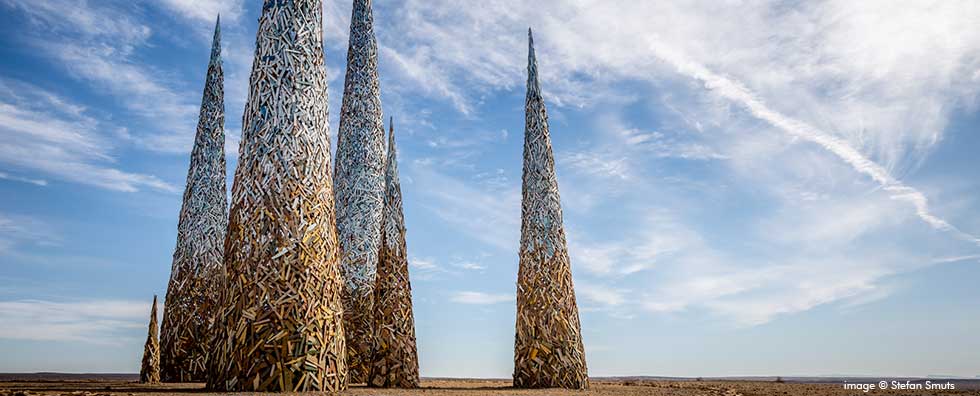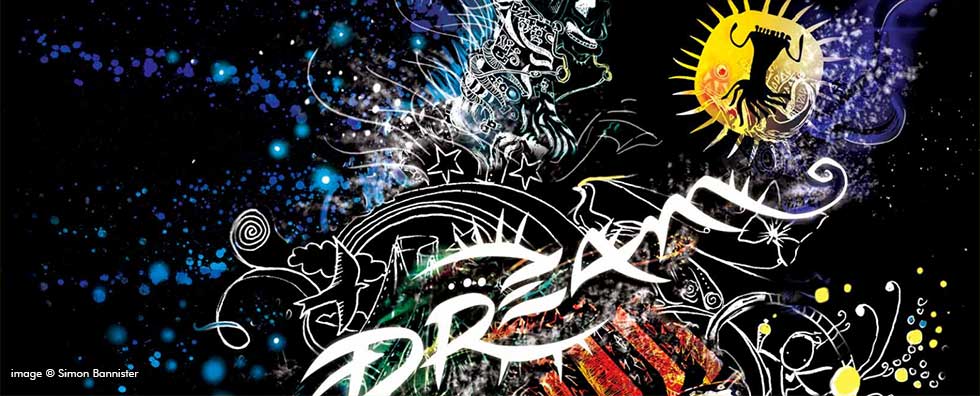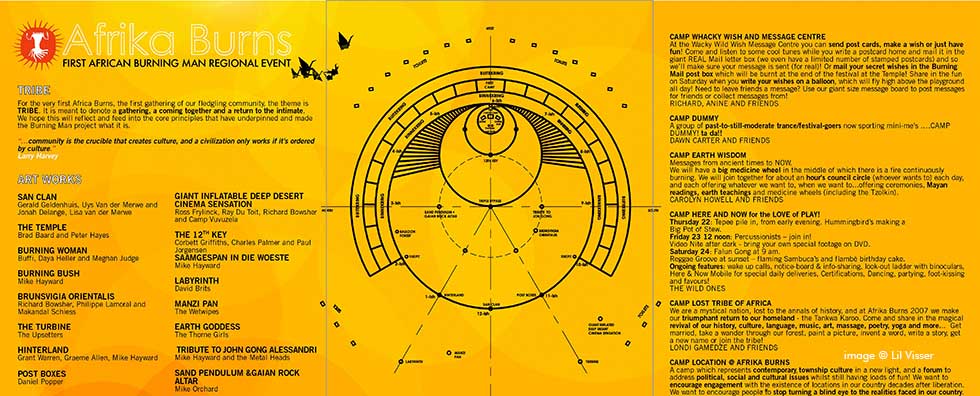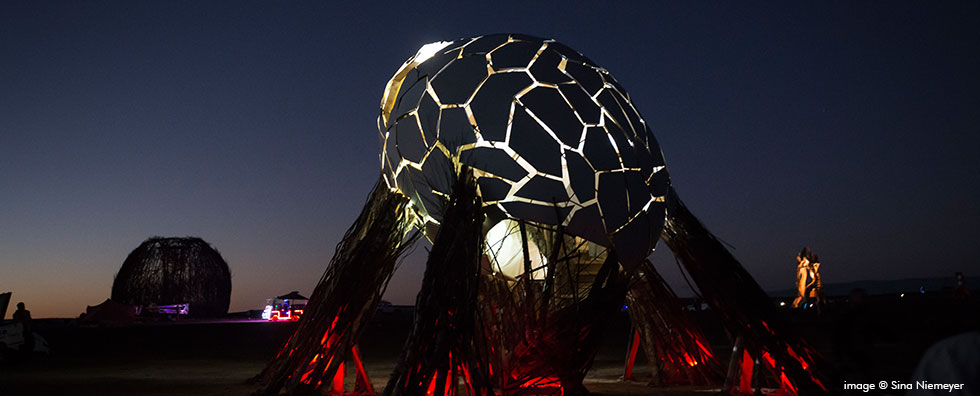Artwork MOOP Policy

Greetings Artists of the Tankwa!
Thanks for stepping up to create magical and fantastical pieces to blow our minds and make Tankwa Town a wonderland. Making a fabulous piece carries a lot of responsibility (as you well know), and one of the key issues during the burn is to keep the site of your artwork clean.
People will hang out at your piece and may also decide to have parties at it. And of course when you burn it, it is important to clean up the site.
This is just a note from your friendly D.E.A.R leads to share some waste management and MOOP control tips so we can all keep Tankwa clean and Leave No Trace!
Top Tips
- First and foremost, plan well so you don’t have excess trash, look at everything you’re taking and reduce the trash before you leave.
- Have a trash plan! Think about what you’re going to do with your trash – Obviously consider your camp (info contained in other documents), but also the area around your artwork – remember, there’s nowhere to dump at AfrikaBurn.
- Here’s a handy blog post to help you get thinking about MOOP back at your camp with your crews.
- For the site of the artwork, remember that if a bunch of people that aren’t used to taking their kak away with them see a few pieces of MOOP on the ground, chances are they’ll make a MOOP pile. Nowhere obvious to MOOP makes MOOPing less okay – especially at the pieces that encourage sitting down for a while.
- If a sound rig asks to stage a party at your artwork, please negotiate and be very clear with them around whose responsibility it is to clean the site after the party.
- Consider the usual suspects in terms of MOOP: no feathers, minimal glass that could break and leave tiny-ass splinters, prepping as much as you can before you take your piece to the desert to avoid wood and metal chips, etc.
- BUT what happens in a MOOP emergency?
- Imagine something goes wrong, and a participant breaks something or uses your project in an unintended manner, and you’ve got MOOP. What materials do you need on hand to clean it up? Plan to bring them, and plan to have help on hand if you might need it: gloves, heavy duty bags and a team that is designated to deal with it if it arises.
- Pack it in, pack it out. Anything your project leaves behind on the site afterwards is MOOP and is not okay.
- If your project generates waste or if your project is designed to be thrown out after the event, consider how you might reduce or eliminate that waste. If you must generate waste, have a plan to pack it out with you.
- It’s your responsibility to please make sure that anything that can fly away in the Tankwa wind doesn’t. Once it’s out there it’s not easy to get it back. Tie bottles to strings, make sure bin bags are secured, weigh down anything that seems a bit wobbly. Never let it hit the ground.
Clean-up Tools
- Line Sweep (noun-verbish)
A line of fine and caring humans, walking slowly, 1m apart in one direction picking up everything that does not belong in the desert…from false eyelashes to stompies to beads. Covering all the possible MOOP that could otherwise be missed. - MOOP Stick (noun)
Equivalent to a lightsaber, commonly known as a grabber or pick-up tool, the MOOP stick quickly and easily allows MOOP troopers to reach the ground and pick up MOOP without breaking their stride or having to bend down on their knees. The MOOP stick can be one of those grabber tools, but more commonly you’ll see people using braai tongs – cheaper and easier to find. - MOOP Bucket (noun)
Any sturdy and easy-to-carry container used for carrying MOOP. Typically, the 5L water containers with handles are re-used with cut-out openings at the top for ease of use. Easier even if you attach it to your belt.
We don’t recommend using packets as with artworks you end up with sharp bits that poke through – which creates more MOOP emergencies. - Rake (noun)
You may find that you have MOOP – wood debris for example – spread over a large surface area. Due to all the dust storms and camp traffic, all of those wood chips and splinters are starting to mix with the dust becoming harder to see… but you know it’s there.
Use a landscape rake to comb a path through the MOOPy area, especially dancefloors where small MOOP gets trodden into the powdery dust. Walk the combed path and MOOP all the debris that popped up. Remember to make things simpler by calling for a few helping hands to MOOP the debris area. If the area is really big, designate a grid and do a line sweep. - Magnet Sweeper (noun)
Metal and wood workers are discovering the power of using a magnetic sweeper. Why be on your hands and knees picking up all those nails and screws and metal shavings that come from welding and grinding when you can simply roll a magnetic sweeper over your targeted areas and have it pick it up for you? Nowadays, they come with a handy dandy release lever to drop all that metal easily into the trash.
Use eye protection when pulling the lever and make sure you’re not downwind so that the metal shavings don’t blow in your face, especially your eyes. We have a few of these at the Arteria (at Off-Centre Camp) to loan. - Hardy Sacks (adjective + noun)
Misprinted woven “sugar sacks” are useful for carrying build waste like metal bits and pieces, and sharply-angled wood that would normally poke holes through black plastic bags. They are also great for rolling the magnet sweeper over when cleaning up post burn. Just lay the sack flat, roll the full magnet sweeper over it and release the metal onto the sack.
There are three times that you have to pay special attention to cleaning your site:
1. Cleaning your site when you have finished building your piece.
2. Cleaning your site after a party has happened there.
3. If you are burning your piece, after the burn or just post de-installation.
1. Cleaning your site after you are finished building.
It’s good to keep your site clean during the build, but the truth is that when you are rushing at a deadline, it’s easy to let it slip a little: dropping screws, letting bits fall, dropping cigarette butts, letting paint drop on the desert floor. So you will have to make a concerted effort when you have finished building.
At the end stage of your build, you will have loads of people coming past and giving you love – getting them to help MOOP your site is a good way to get people to participate.
Again, there are magnet sweepers available to borrow at the Arteria (at 8-ish) which is open from 9am to 5pm daily.
2. Cleaning your site after an event has happened there.
It is protocol for people wanting to have a party to at your piece to check in with you. It is however not always possible to do such a thing, and Tankwa Town is good at free-styling. If a mutant vehicle asks you if they can have a party at your site, make sure that they undertake to clean the site afterwards. If they don’t, please be sure to knock on their door and confirm that they will clean up the site. If you plan your own party on the site please make sure that you clean up too.
Dance floors are the most beguiling MOOP pits. As people are stomping, MOOP gets dug in deep so make sure that you have enough people for a line sweep.
3. Cleaning up after your Burn or de-installation.
When you have burned your piece, whooped your whoops and high-fived each other, remember there is a big cleanup to do. This is a very good way to get people involved in your project. Line the good people up, get the tools and make sure you have more than enough people listed and co-opted on this crew well in advance of the event. A good incentive is to have some gentle music playing and possibly offer breakfast to those that come and help clean up.
Cleaning up a burn site includes taking the all left over coal, nails, rebar, cables, etc. off site. It is also your responsibility to remove the debris.
Line Sweep Tips:
When you’re sweeping your site, it works really well to think of it as a grid. Then think of the grid in terms of Red, Orange, Yellow and Green – just like the MOOP Map.
You’ll probably need to do a few sweeps… think of your first pass as an assessment pass. If an area seems RED and becomes too overwhelming, mark the area, move on and focus on it on your second pass. Keep the Line Sweep moving until you’ve assessed the entire grid. Do a second and third pass of your grid until it’s GREEN.
Orange traffic cones or similar large things work really well to visually define a RED Area (AKA “Hotspot”) to come back to focus on.
Please take all your rubbish home with you, it makes DPW’s lives THAT much more difficult to have to clean up trash from the roadside. Make damn sure any trash you are transporting back with you is very well tied down.
If you know of anyone who would like to stay on for a while after the event to assist with the final MOOP SWOOP please suggest they volunteer for this awesome task by filling in this form right here.
And as a last look, check out the 6 R’s here.
RESPECT – RETHINK – REDUCE – REUSE – RECYCLE and RESTORE
Questions? [email protected]





